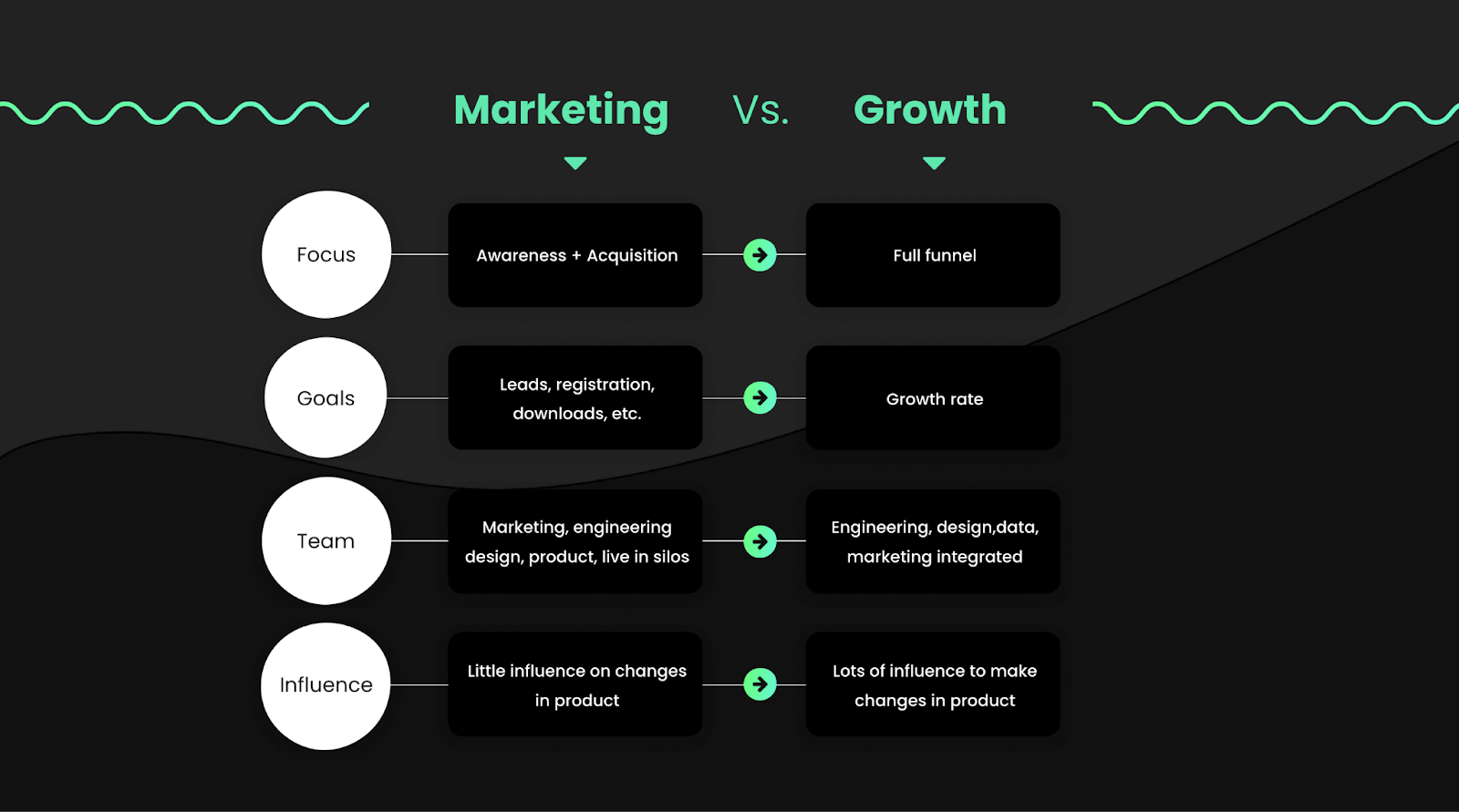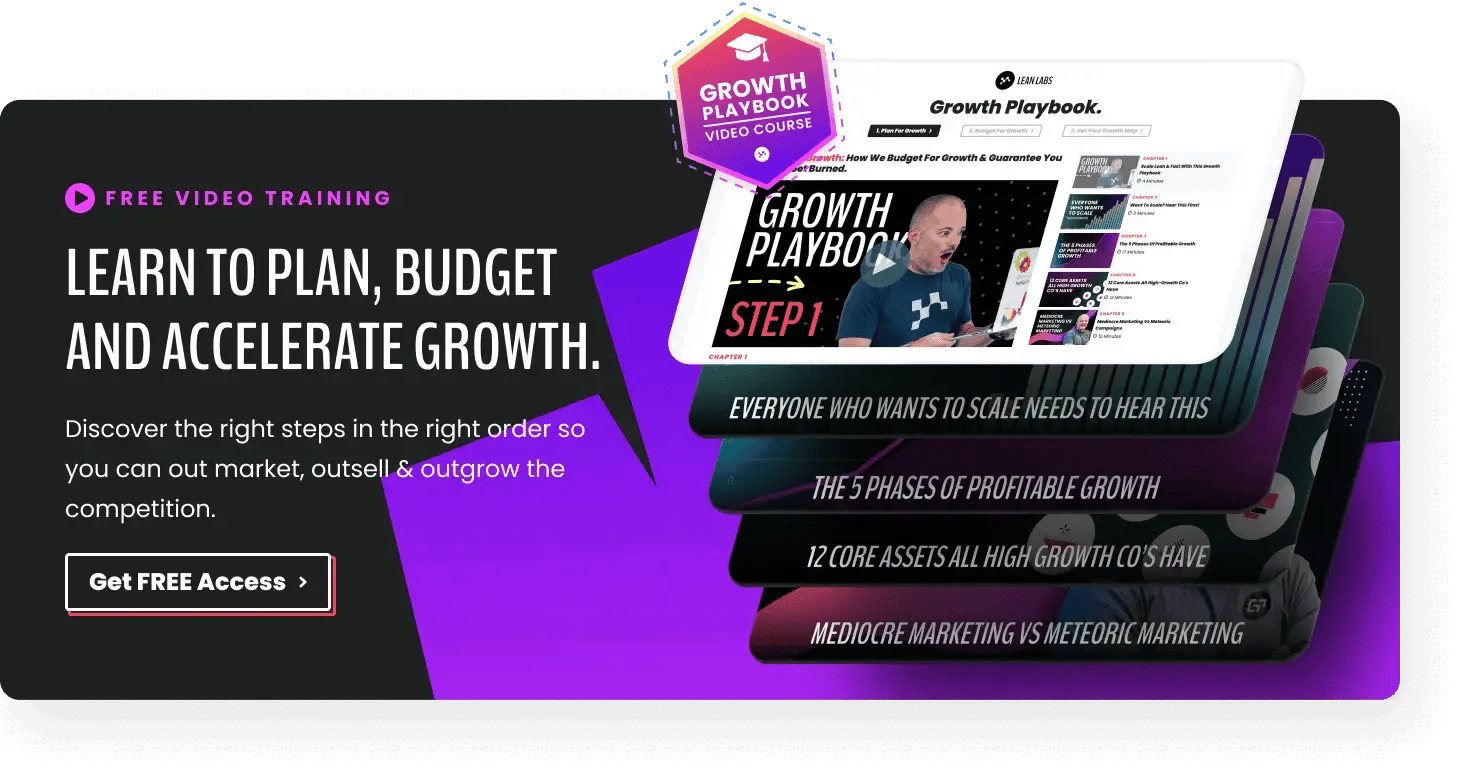-
Growth Teams and Product Teams: Key Similarities and Differences
-
What is a Growth Team?
-
What Roles Are on the Growth Team?
-
What is a Product Team?
-
What Roles Are on the Product Team?
-
3 Ways Product Teams and Growth Teams Can Work Together to Maximize Results
-
1. Growth Team Suggests Data-Driven Roadmap Items
-
2. Product Team Uncovers Potential Tests for Growth Team to Run
-
3. Continuously Share Learnings
-
Growth Team and Product Team: United

Growth Team vs. Product Team (& How They Can Work Together)
High-growth companies tend to have one crucial mindset that sets them apart: they avoid silos at all costs.
The old way of doing things– building separate departments for marketing, sales, product, and customer success, each accountable to their own KPIs, with no process or incentive to collaborate– is dead. Instead, to thrive in today’s climate, a business must build a cross-functional growth team that ties all these functions together.
But how is a growth team different than a product team? And how can these teams work together and avoid the same silo problem legacy companies struggle with? This article will give you the answers and set you up to build a robust, cross-functional team that works together to serve the most important person: The User.
What is a Product Team?
A product team generally owns the experience and performance of a particular product. The best product teams are small, multidisciplinary, and collaborative. They own the product roadmap and are responsible for implementing product improvements.
Great product teams are constantly seeking to understand the problems, emotions, and needs of their customers. As customer experts, they’re able to implement product improvements that users love.
Unlike growth teams, product teams tend to focus most of their energy on just two levers of growth: retention and referral. Most of the product team’s activities focus on improving the product experience for current users.
What Roles Are on the Product Team?
There are many ways to structure a product team. Larger organizations may have several product teams organized around different products, different customer segments, or customer journey stage. Regardless of structure, most product teams include these key players.
Product Manager
A product manager typically heads up product teams. This person is responsible for the vision and end-to-end experience of the product. They also own success metrics like daily active users, churn, and NPS score.
The product manager ensures that product improvement projects run on time and under budget. They must be excellent communicators and leaders.
Product Designer
The product designer must deeply understand and represent the voice of the user. They work to improve the UI and UX of the product. Product designers may conduct customer interviews and review screen recordings to identify friction points and opportunities to improve the product experience.
Product Engineer
The product engineer is a developer responsible for implementing designs in the live environment. A great engineer knows how to bring designs to life in a bug-free experience. The product developer is also responsible for maintaining the product's codebase to ensure the code stays clean and functional.
3 Ways Product Teams and Growth Teams Can Work Together to Maximize Results
The most successful technology companies don’t create false dichotomies of growth team vs. product team. Instead, they blend the growth and product teams together into a super team. At the end of the day, both product and growth teams have the same objective: to drive consistent business growth by facilitating exceptional user experiences and solving real customer problems. By getting (and staying) aligned on this core focus, growth teams and product teams can work together to accomplish their shared mission.
The following are three ways the growth team and product team can collaborate to achieve their goals.
1. Growth Team Suggests Data-Driven Roadmap Items
The growth team addresses every aspect of the end-to-end customer experience. They talk to prospects and customers. They understand the problems, pains, and desires that drive prospective customers to take action. The growth team also tracks the “reputation” metric and pays attention to what motivates users to leave positive reviews and recommend the product to friends.
Armed with this knowledge, the growth team can suggest data-backed product improvements that will not only make the product better for active users but will also help attract and convert new users.
2. Product Team Uncovers Potential Tests for Growth Team to Run
The product team works closest to the active users. They know what the best customers care about most. They know which features users love and frequently use.
Based on this understanding, the product team can recommend features, benefits, and use cases for the growth team to test in their messaging. If 90% of active users love a particular feature, then maybe highlighting that feature more prominently in marketing assets will help attract more new users.
3. Continuously Share Learnings
Both growth teams and product teams are constantly learning from users. By continually studying user behavior, both teams become experts in different aspects of the ideal customer.
Sharing these learnings across teams with a routine cadence will help both teams build better experiences for the end user. By maintaining the free flow of information into a “shared pool of knowledge,” both teams can be more effective.
Growth Team and Product Team: United
When your growth and product teams work together, everyone wins. Tear down siloes, unify your data, and facilitate the free flow of information, and you will see results. The best way to unify the two teams is to align on a shared north star objective. What shared metric can both teams track and improve over time through their efforts? Quarter over quarter revenue growth? Monthly active users?
Another tip for maintaining alignment between your product team and growth team is to schedule routine check-ins between each team’s leadership. A regular cadence of communication helps information flow freely and builds a habit of inter-team transparency.
Lastly, the most successful growth and product teams leverage a proven methodology to evaluate data, execute strategic plays, and measure results. And you’re in luck! We are giving away our most valuable growth plays, absolutely free. Download the Growth Playbook today to ethically steal our most effective plays that you can run to achieve reliable, scalable business growth.








